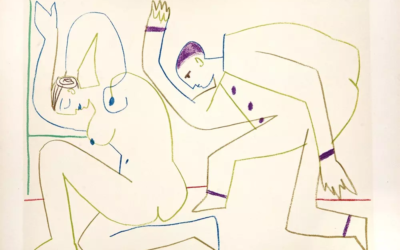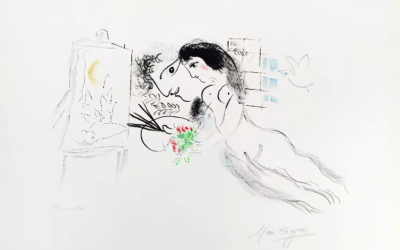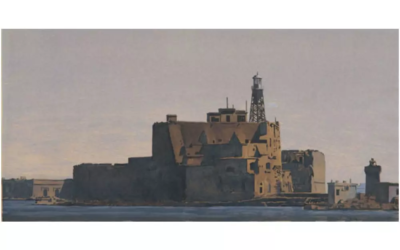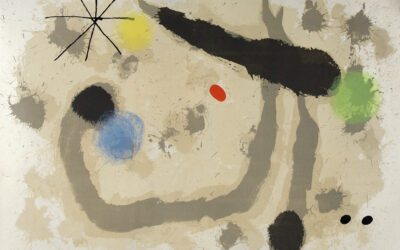
The print: an original work?
Because of its accessibility, the print is a very coveted work of art for art lovers and collectors. Sometimes considered as a reproduction of an original work, it is far from being a copy. Let's see how to distinguish between original work and reproduction.
How are prints original works?
What is really a print?
A print is an "artistic image, printed, usually on paper, by means of a matrix processed in relief (woodcut, linocut), intaglio (on metal: taille-douce) or flat(lithography, silkscreen)" (Larousse).
The artist creates an original work on a matrix, which is then printed by a specialized printer. The prints are then available as limited editions, signed by the artist.
The print can be printed in multiple copies, being thus a work both unique in its matrix and multiple in its proofs. These prints can come, for the artist, from a desire to diversify his work, to experiment a new technique or to diffuse his art to the greatest number.
By the various technical possibilities offered to the artists and the numerous artistic decisions, such as the selection of the colors or the choice of the paper, the print is an original work in itself in its process of creation. The print: a truly original work
The print is thus an original work, because it is the artist who realizes himself his work He engraves it on the copper plate, draws it on the lithographic stone or the transfer paper, he creates the drawing intended for the serigraphy, etc. By the process of manufacture and the implication of the artist in its realization, the print is certainly multiple, but well an original work with whole share. It becomes a real and original aesthetic project.
The realization of a print allows the artist to build his work by making it pass through several "states" or trial proofs in order to arrive at the desired result for the edition. These states of the same work then carry a unique and rare character, tracing the artistic research and the attempts of the artist.
Indeed, it is not uncommon for handmade prints made by the artists themselves to find components of the series that will not look exactly like the others. For example, in the case of woodcuts, after a certain number of prints, they will all be different due to the amount of ink applied or the wear of the wood, which gives the print its unique character. Nevertheless, when the print is made in a workshop where the practitioners and technicians perfectly master the inking, the proofs are identical.
The notion of an original print can also take on its full meaning over time. Indeed, one of the pleasures of building up a collection of prints is the history that the medium carries. It is interesting to find small signs on the print itself, on the reverse side, or even on the frame from previous collectors. These different stigmata, which mark the sheet, can be particularly valuable for collectors to trace the life of his print.
The original print vs. the interpretation print
An original work can be interpreted and transposed on the matrix by an engraver or a lithographer: it is an interpretation print. This work is usually done under the direction of the artist, who can put his signature on the print. In the case of an original print, the artist himself designs his creation on the matrix. The original print covers of course all the possible possible techniques of expression lithography, etching, engraving, monotype... Buying an original work can be difficult. Some unscrupulous sellers may try to sell fake prints or later reproductions.
Acquire an original print for your art collection
Prints are the most accessible art form to build a collection of build a print collectionIndeed, it is one of the most traded art forms among collectors. Given the great diversity of techniques and the multiple nature of prints, it is important to be cautious before making any acquisition by obtaining information or being accompanied by a specialized gallery.
Numbering and signature
In the making of an edition, the print goes through a number of stages before it is approved by the artist, who then affixes his "bon à tirer" (often noted by its abbreviation "BAT"), thus validating the proof which will be printed in several copies.
In agreement with the publisher, the artist defines a limited number of copies to be printed and numbered. The smaller the edition, the higher the economic value of the proofs. A large print run, i.e. more than 200 copies, will be less valuable than a small print run of a few dozen copies.
At the time of the printing, some proofs are reserved for the artist, his relatives, the printer and his collaborators, thus bearing the mentions E.A. (artist's proof), H.C. (hors commerce) or more rarely "collaborator's proof". Because the proof has generally been less circulated and exhibited than the one intended for sale, keep in mind that this original work reserved for the artist is often in very good condition.
In the field of printmaking (unlike photography for example), the print number has no influence on the price. There is also no difference between a numbered plate and an artist's proof.
Beware of false signatures
There are fake signatures on real prints, especially among great artists like Chagall, Matisse, Miró or Picasso. It is then useful to be accompanied by professionals when you wish to acquire original prints.
Our advice for buying a print
To take all the necessary precautions when acquiring an original work, it is important to consult the artist's catalog raisonné, when available. The artist's catalog raisonné lists all the works created by the artist in the course of his or her lifetime, with details of the work itself, including print run, signature, etc. This provides valuable information for the purchaser. This provides valuable information for the buyer. If it's a print by a renowned artist, you can ask for a precise indication of the catalog raisonné number, and why not a copy of the page in question. La Galerie d'art Arenthon in Parisas well as the Galerie de l'Institut always indicates the catalog raisonné reference number on its invoices, and is always happy to offer interested customers a copy of the catalog raisonné page for the work in question.
In the absence of a catalog raisonné, proving the authenticity of the work is sometimes more complex. If there is any doubt, it is advisable for art lovers as well as seasoned collectors to prefer specialized galleries to buy a print.
Galerie Arenthon has been renowned for its reliability for over 50 years. It draws on the experience of Marc Lebouc and Yves Leboucboth recognized experts in printmaking. Visit Galerie Arenthon invites you to discover its many original works and prints by a variety of artists, from the great masters to more confidential printmakers or those forgotten by recent art history.





